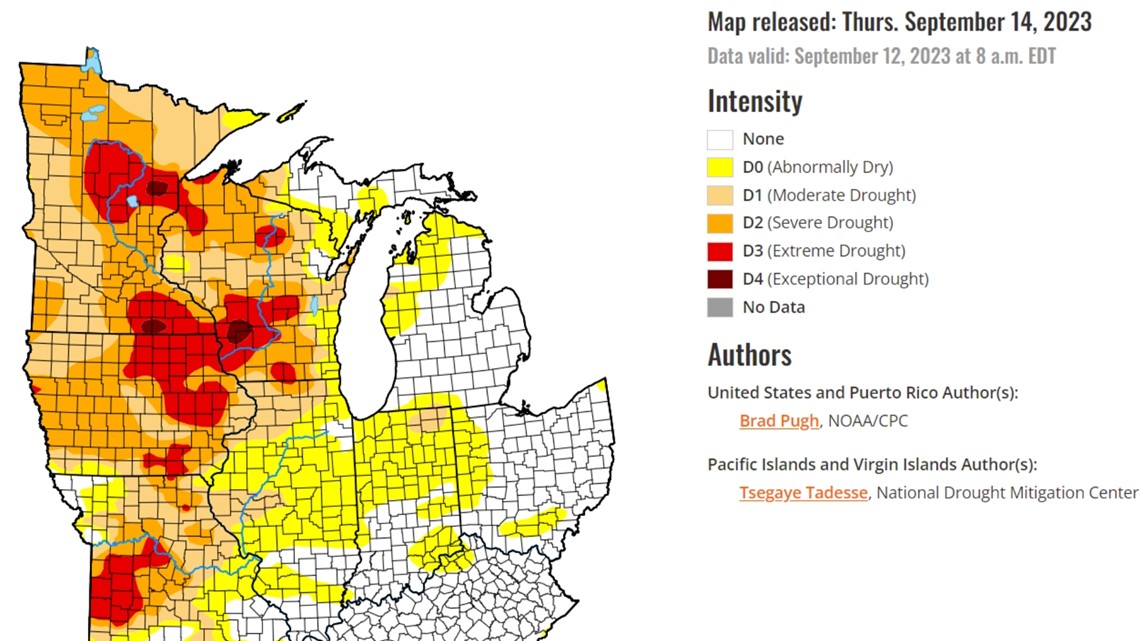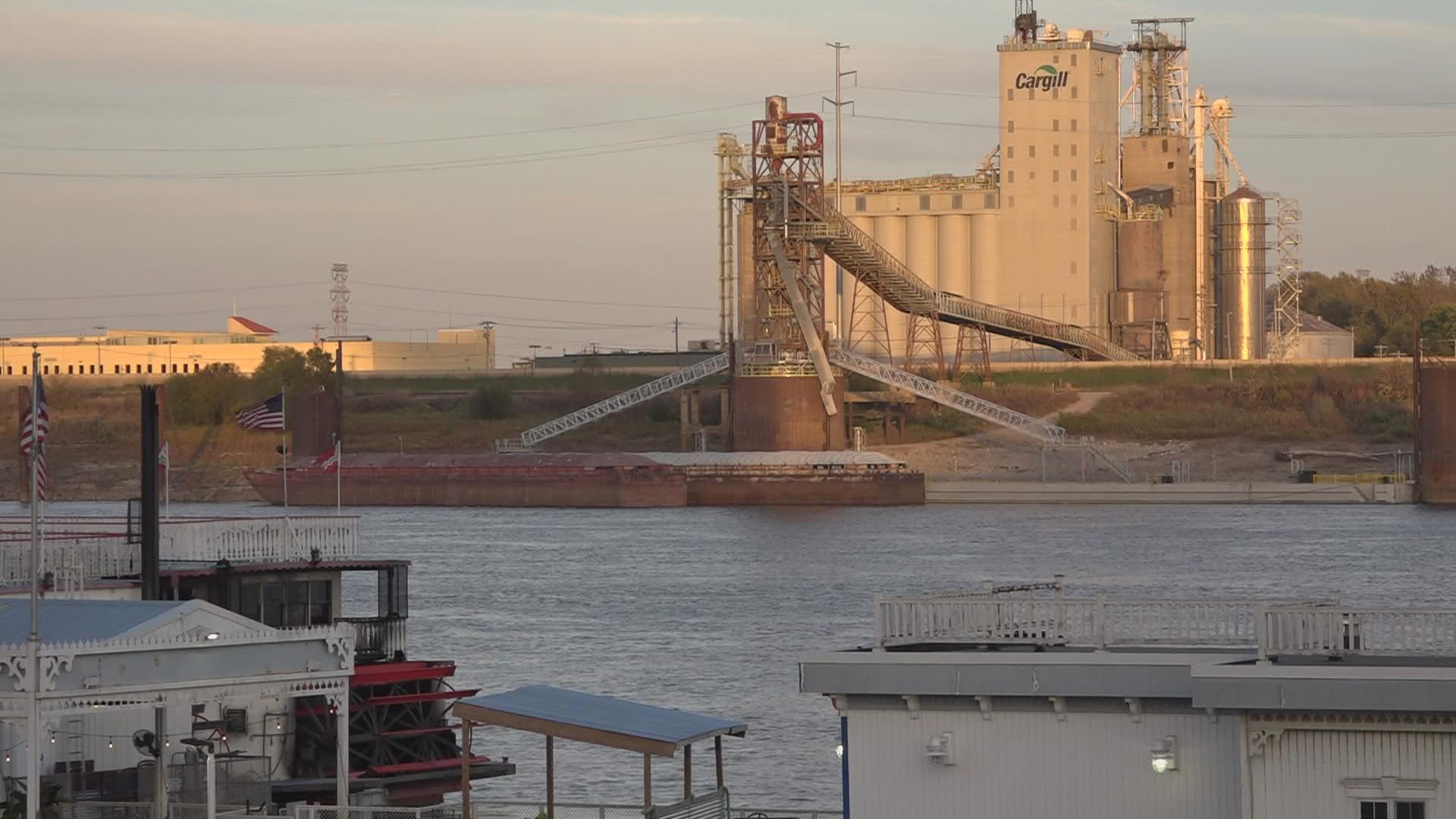ST. LOUIS — A walkway reemerging from the depths of the Mississippi River signals the opportunity to see a great tourist destination for some, but it sets off alarm bells for water experts.
Tower Rock is accessible by foot once again, after last year's low water levels revealed a rock walkway for the first time in years. That walkway has reemerged again this year, a whole month earlier than last year. The river usually sees its lowest point between November and January each year, so levels hitting critically low levels in September signal a rough upcoming dry season.
The lowest depth the Mississippi River water gauge has been recorded at St. Louis was at -6.20 feet on Jan. 15, 1940, according to the National Weather Service. The United States Geological Society's gauge height reading of -3.46 feet on Sept. 16, the lowest reading recorded this year, ranks as the 22nd lowest reading water levels have ever reached. The vast majority of lower readings were recorded in either December or January.
Critically low water levels along the river are slowly moving from an unusual occurrence to an annual issue. Last year's near-record river water levels caused barges to pile up and food and energy costs to rise.
Editor's note: The above video aired during a 2022 broadcast.
Water levels near St. Louis are already lower than they were at any point in 2022. River levels usually go down during the fall and winter, but levels being this low this early in the dry season signals issues to come for water experts like Jason Knouft, a primary investigator at St. Louis University's WATER Institute.
"What happens in Missouri and the Mississippi River in our area is dictated by what is happening upstream, particularly Minnesota, Wisconsin and Iowa ... and those areas are in some of the most intense droughts right now in the U.S.," Knouft said. "All three of those states are in significant drought conditions and the really intense drought areas in those states now are concentrated over the major tributaries of the Mississippi."
The U.S. Drought Monitor backs up Knouft's claim. The vast majority of all three states are experiencing either severe or extreme drought.


St. Louis' water supply is not threatened by the low water levels, since the city gets the vast majority of its water supply from the nearby Missouri River. However, low river water levels will most likely drive grain prices up due to barges not being able to traverse the waters. Additionally, prolonged low water levels could increase chemical pollution levels and pose a threat to the river's fish.
"When the water level is lower and chemicals are still being input into the river, they're more concentrated," said Caroline Pufalt, a river volunteer for the St. Louis Sierra Club. "That could be harmful to aquatic wildlife, birds, otters and other creatures that live along the river bank and in the water."
Top St. Louis headlines
Get the latest news and details throughout the St. Louis area from 5 On Your Side broadcasts here.

